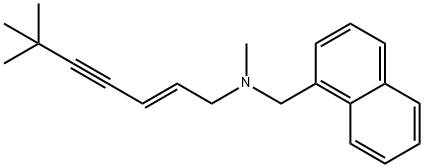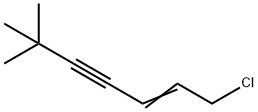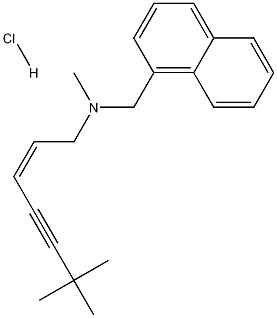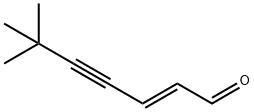Terbinafine , ≥99% , 91161-71-6
CAS NO.:91161-71-6
Empirical Formula: C21H25N
Molecular Weight: 291.43
MDL number: MFCD00242672
EINECS: 618-706-8
| Pack Size | Price | Stock | Quantity |
| 50MG | RMB23.20 | In Stock |
|
| 250MG | RMB31.20 | In Stock |
|
| 1g | RMB38.40 | In Stock |
|
| 5g | RMB115.20 | In Stock |
|
| 10g | RMB186.40 | In Stock |
|
| 25g | RMB335.20 | In Stock |
|
| 100g | RMB1065.60 | In Stock |
|
| others | Enquire |
PRODUCT Properties
| Melting point: | 203-205 °C |
| Boiling point: | 417.9±33.0 °C(Predicted) |
| Density | 1.007±0.06 g/cm3(Predicted) |
| vapor pressure | 0Pa at 25℃ |
| storage temp. | 2-8°C |
| solubility | soluble in Methanol |
| form | powder to crystal |
| pka | 6.92±0.50(Predicted) |
| color | White to Light yellow |
| LogP | 3.3 at 37℃ and pH7 |
| CAS DataBase Reference | 91161-71-6(CAS DataBase Reference) |
Description and Uses
Terbinafine (Lamisil) is a second-generation allylamine that is related to naftifine; however, it is 10 to 100 times more potent in vitro. It is fungicidal, whereas griseofulvin, ketoconazole, itraconazole, and other azole derivatives are all fungistatic. Because it is fungicidal, duration of therapy is shorter, and relapse rates are less than with other oral or topical therapies. Terbinafine acts by inhibiting squalene epoxidase and thereby decreasing synthesis of ergosterol, an essential component of fungal cell membranes. It is highly lipophilic and concentrates in the stratum corneum, sebum, and hair follicles. Slightly better cure rates are attained with b.i.d. than with daily dosing.
Safety
| Symbol(GHS) |  GHS07 |
| Signal word | Warning |
| Hazard statements | H302-H315-H319-H335 |
| Precautionary statements | P261-P305+P351+P338 |
| Hazard Codes | Xi |
| Risk Statements | 36/37/38 |
| Safety Statements | 26-36 |
| HS Code | 2921450090 |






